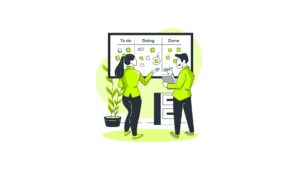Accept Cookies & Privacy Policy?
We use cookies to ensure that we give you the best experience on our website. If you continue to use this site we will assume that you accept and understand our Privacy Policy, and our Terms of Service.
This testing method ensures that a website or application is highly interactive, easy, and intuitive to use. Accessibility testing ( a subset of usability testing) focuses solely on making a website or application more accessible for disabled individuals. The higher degree of adaptability and user-friendliness for any software application or product in the market is verified solely by deploying this testing method.
The primary goal of this testing protocol is centered on incorporating accessibility into more common evaluation methods, including standard reviews, heuristic evaluations, designing walkthroughs, and all informal evaluations among users with disabilities.
Usability testing aims at collecting both quantitative and qualitative data from real users executing real tasks engaging in interface interactions with a software application or product. Usability testing professionals can evaluate certain arenas of accessibility by deploying standardized usability testing protocols, that are inclusive of modifications for participants with disabilities.
Ideally, a usability professional is not essential and neither is the formal usability testing protocol for including people with disabilities in the overall software evaluation. Short informal project evaluations can also aid in gathering valuable feedback from people with disabilities without the additional efforts of a formal usability testing protocol. In most cases, an usability testing evaluation involves the following:
While usability testing evaluates the real life implications of all software accessibility solutions that are specifically designed for people with disabilities, However, usability testing in itself cannot address all accessibility issues and does not aid in evaluating a software’s conformity to all accessibility standards.
Evaluation for Accessibility – Guiding on incorporating accessibility into other evaluation methods, such as interaction; observation, and data collection would focus on some standardized protocols and review mechanisms. It is always deemed better to conduct other simultaneous evaluations before investing in formal usability testing with people with disabilities.
In most cases, heavy expenses on deploying formal usability testing are avoided and substituted with an alternative easier, less expensive evaluation method.
Conducting informal evaluations throughout a product development project is often found to be more effective than conducting full fledged formal usability testing at the end of every project. While covering formal usability protocols, much of the same information also applies to most informal evaluations, field KTs, and other collaborative team efforts with real life participants with disabilities.
However, some stringent formal usability testing exercises with real life participants with disabilities might deploy standardized industry protocols. However, for the most part, usability tests are designed specifically to further explore minor accessibility issues, the protocol, however, might look different from a typically generalized usability test execution; for example:
Guide to usability testing with participants with disabilities in the following steps
Usability Testing is a type of testing that is done from an end user’s point of view to indicate whether the system is easily adaptable and usable. It is the practice of testing the simplicity of a UI design when considered practically in terms of its real life use cases. A common mistake in usability testing is deploying a study too late in the designing process If you wait right until the product release, most likely you won’t have the time or money left to fix any issues later down the production pipeline having wasted a lot of additional efforts while developing your product the wrong way all throughout.
Accessibility testing is a subset of usability testing wherein the users under consideration are people with or without disabilities. It is the practice of making a website/mobile application usable to as many people as possible. This process additionally ensures that the website / mobile application is easily accessible to those with disabilities, such as vision impairment, hearing disabilities, and other physical, motor, or cognitive impairments.
Our Accessibility Testing Service Approach
Accessibility Testing Tools deployed are
Other Testing Services Compatible With Usability and Accessibility Testing.
Software Usability Testing, alternately referred to as User Experience(UX) Testing, is a software testing process deployed to measure how easy and user-friendly a software application is. This test is performed by a small set of targeted end-users who interact with the software applications with an aim to expose all underlying usability defects.
The Thoughframeworkers and their experience in Usability & Accessibility Testing Adding value to Usability & Accessibility Testing requirements by:

So picture this: You’re the air traffic controller of a chaotic airport where the planes (developers) don’t always listen, the passengers (stakeholders) want to change destinations mid-flight, and the weather (unforeseen blockers) is always unpredictable.

Imagine a world where testing is no longer a bottleneck. No more endless cycles of manual effort, no more missed defects due to human fatigue, and no more panic at the eleventh hour before a major ERP rollout.

Imagine a world where testing is no longer a bottleneck. No more endless cycles of manual effort, no more missed defects due to human fatigue, and no more panic at the eleventh hour before a major ERP rollout.

Let’s talk about GenAI and testing in 2025—the wild west of technology where machines are not just smart, but scary smart. GenAI (that’s Generative AI for the uninitiated) is running the show everywhere. It’s writing poetry, designing ads, debugging code, and probably plotting to take over my job as I write this blog.

Ah, 2024—you’ve been a year, haven’t you? For us at Thought Frameworks, this year wasn’t just about running the usual QA/QE playbook. Nope, we went full throttle into the future—tinkering, testing, and transforming everything from ERP systems to the ever-evolving world of SAP, GenAI, and security testing.

So, you’re deep in the ERP trenches and trying to figure out the best approach between NetSuite and Oracle EBS. You’re certainly not alone! We can help break down how these two ERP giants stack up when it comes to ensuring systems run like clockwork but without the overload.
Accept Cookies & Privacy Policy?
We use cookies to ensure that we give you the best experience on our website. If you continue to use this site we will assume that you accept and understand our Privacy Policy, and our Terms of Service.
| Cookie | Duration | Description |
|---|---|---|
| cookielawinfo-checkbox-analytics | 11 months | This cookie is set by GDPR Cookie Consent plugin. The cookie is used to store the user consent for the cookies in the category "Analytics". |
| cookielawinfo-checkbox-functional | 11 months | The cookie is set by GDPR cookie consent to record the user consent for the cookies in the category "Functional". |
| cookielawinfo-checkbox-necessary | 11 months | This cookie is set by GDPR Cookie Consent plugin. The cookies is used to store the user consent for the cookies in the category "Necessary". |
| cookielawinfo-checkbox-others | 11 months | This cookie is set by GDPR Cookie Consent plugin. The cookie is used to store the user consent for the cookies in the category "Other. |
| cookielawinfo-checkbox-performance | 11 months | This cookie is set by GDPR Cookie Consent plugin. The cookie is used to store the user consent for the cookies in the category "Performance". |
| viewed_cookie_policy | 11 months | The cookie is set by the GDPR Cookie Consent plugin and is used to store whether or not user has consented to the use of cookies. It does not store any personal data. |
Ready for a Quality Software?
Let’s Dig Deep Into Your Thought!